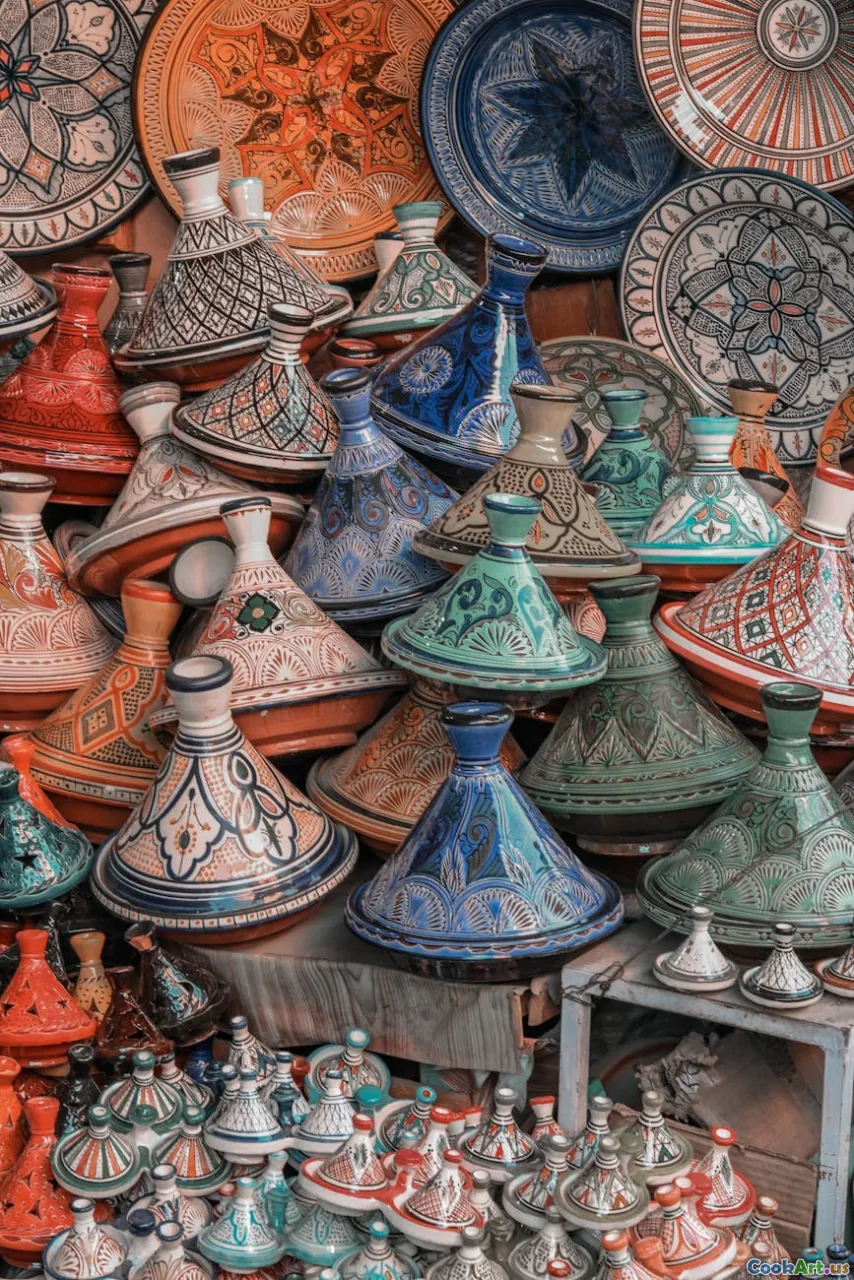Moroccan Tagine At Hidden Marrakech Eateries
7 min read Discover the soulful flavors of Moroccan tagine at Marrakech’s secret eateries, where tradition and authenticity blend in every aromatic bite. May 02, 2025 15:00
Moroccan Tagine At Hidden Marrakech Eateries
An Invitation to the Heart of Marrakech’s Culinary Soul
Imagine walking through the labyrinthine streets of Marrakech, where the air is thick with the scent of spices, roasted meats, and sweet citrus. The city’s vibrant souks pulse with life, colors, and aromas—the perfect backdrop for discovering one of Morocco’s most iconic dishes: tagine. But beyond the well-trodden tourist spots lies a world of hidden eateries, tucked away in alleys and beneath centuries-old riads, where authentic tagines are crafted with love, tradition, and a dash of Marrakech magic.
This article is your passport to those secret culinary gems—places where locals gather, stories unfold over steaming bowls of fragrant stew, and each bite transports you deep into Moroccan culture.
The Cultural Significance of Tagine in Morocco
A Tradition Steeped in History
The tagine—named after the conical clay pot in which it is cooked—is more than just a dish; it’s a symbol of Moroccan hospitality and heritage. Its origins trace back centuries, influenced by Bedouin nomads, Berber tribes, and Arab traders who carried spices, preserved fruits, and intricate cooking techniques across North Africa.
The unique shape of the tagine pot allows for slow-cooking, trapping steam and flavors, resulting in tender meats and deeply infused sauces. This method preserves the essence of local ingredients and enhances their natural flavors.
Regional Variations and Personal Touches
From the rich, saffron-infused tagine with lamb and prunes to the vibrant vegetarian versions with seasonal vegetables and preserved lemons, each region and family adds its own twist. But the core remains: patience, quality ingredients, and respect for tradition.
Hidden Marrakech Eateries: The Authentic Experience
Discovering the Offbeat Food Scene
While Marrakech’s famous Jemaa el-Fnaa square is a feast for the senses, it can sometimes overshadow the city’s quieter culinary treasures. Venture into the backstreets, where unassuming doors lead to cozy kitchens serving the most authentic tagine you’ll ever taste.
These secret spots often lack signage, relying on word-of-mouth and local trust. They are run by families who have perfected their recipes over generations, using age-old techniques passed down through lineage.
Personal Encounters and Local Stories
During my explorations, I stumbled upon a modest courtyard tucked behind a crumbling riad. Inside, a matriarch named Amina was preparing tagine with her son, a vibrant bubbling stew simmering away on a traditional wood-fired stove. The aroma of saffron, cinnamon, and preserved lemon was intoxicating.
Amina shared that her tagine was a family secret, crafted with a special blend of spices she’d been handed down. Sitting on woven cushions, I tasted a dish that was tender, flavorful, and deeply comforting—a true reflection of Moroccan hospitality.
The Art of Making Tagine: Techniques and Tips
Authentic tagine preparation involves patience and meticulous attention to detail:
- Marination: Meats are often marinated overnight with spices, garlic, and herbs.
- Layering: Ingredients are layered carefully—meat, vegetables, dried fruits, and spices—inside the tagine.
- Slow Cooking: The lid traps moisture, allowing flavors to meld over low heat for several hours.
- Final Touches: Fresh herbs, a squeeze of lemon, or a drizzle of honey often finish the dish.
Visiting these hidden eateries offers a rare glimpse into this culinary craftsmanship.
Sensory Journey: What Makes Moroccan Tagine Irresistible?
Visual Appeal
A perfectly cooked tagine is a visual delight: tender meat falling apart, vibrant vegetables, and a glossy, aromatic sauce that invites you to dive in.
Aromatic Complexity
The first thing that hits you is the aroma—warm spices like cumin, saffron, ginger, and cinnamon mingling with caramelized onions and slow-cooked meats.
Texture and Taste
The texture is melt-in-your-mouth tender, complemented by the slight chew of preserved lemons or dried fruits. The taste is a harmonious balance of savory, sweet, and tangy notes.
The Experience
Eating tagine in a cozy Marrakech corner—a shared experience filled with stories, laughter, and the satisfaction of authentic Moroccan cuisine—transcends mere sustenance.
Why Seek Out Hidden Eateries?
Authenticity and Tradition
Mainstream tourist spots often water down recipes to cater to a broader audience. Hidden eateries maintain the integrity of traditional cooking, offering a genuine taste of Morocco.
Cultural Connection
Sharing a meal in these intimate settings creates a deeper connection with locals, offering insights into their daily lives, stories, and culinary secrets.
Surprising Discoveries
Every visit becomes an adventure—unexpected flavors, new spices, and the warm hospitality that defines Moroccan culture.
Final Thoughts
Exploring Marrakech’s hidden eateries is more than a culinary journey; it’s an immersion into the soul of Moroccan tradition. From the fragrant tagine bubbling in a quiet courtyard to the stories shared over steaming bowls, these experiences forge unforgettable memories.
Next time you find yourself wandering Marrakech’s alleyways, seek out these secret spots. Let the aroma guide you, and prepare to fall in love with the true taste of Morocco—authentic, soulful, and deeply rooted in centuries of history.
Bon appétit, or as they say in Morocco, 'Bismillah'—in the name of God—may your culinary adventure be as rich and flavorful as the city itself.









